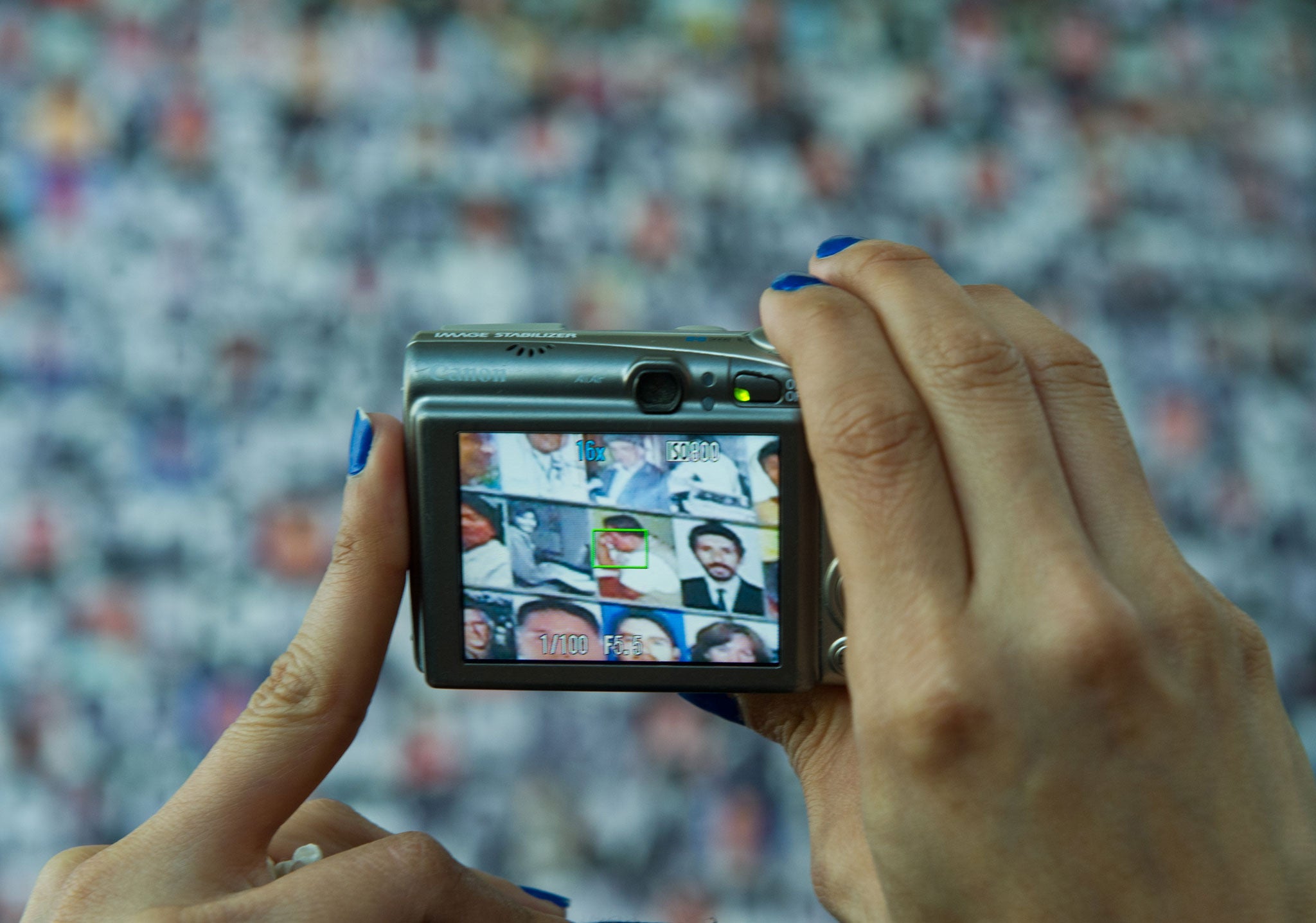Now I really don't want to appear on the Newseum's shameful list
Two pro-Hamas journalists were removed following an Israeli-led campaign


Many years ago, the “Newseum”, described as “America’s most prominent media museum”, asked me if I would donate a piece of shrapnel that had fallen outside my Beirut home during an outbreak of sectarian fighting in 1983, at the height of the Lebanese civil war; to show, I suppose, the dangers that reporters underwent in the course of their daily work. And in those days, I actually did keep bits of metal and old cartridge cases – even a hunk of artillery shell from the USS New Jersey which smashed through the forests of the Chouf mountains – to remind myself that I was a member of an endangered species. But I had the odd feeling that anything called the “Newseum” was a dodgy institution. So I kept my jagged hunk of shrapnel at home. In due course, the “Newseum” disappeared – but was then re-born, with the same name but with a spiffing new address in Washington DC.
All well and good. But now a cloak of shame is beginning to spread over this beacon of journalistic “excellence”. A memorial event for the 84 journalists killed while reporting war in 2012 has turned into a painful display of how a pro-Israeli lobby group can erase the names of reporters or cameramen who die in war – but who happen to be on the “wrong” side, or who happen to be reporting for the television station of the “wrong” side, or who can be labelled with that old cliché of “terrorists” because they opposed Israel or worked for a television station which opposed Israel.
In its 2012 panel of the dead, the “Newseum” (and we’d better keep using those quotation marks) included the names of Hussam Salama and Mahmoud al-Kumi, who worked as cameramen for the Hamas-affiliated station Al-Aqsa TV, and who were blown to bits last November when an Israeli missile exploded in their car – clearly marked “TV” – as they were driving from a hospital where they had been filming casualties of the Hamas-Israeli fighting.
I suspected – as soon as that pro-Israeli, pro-Likudist “think-tank” (again, the quotation marks are necessary), the Foundation for the Defence of Democracies, complained about the inclusion of the two men – that the “Newseum” would grovel. For one day after the “Newseum” website announced the 84 names, Cliff Day, the president of the “Foundation”, announced that he would be “putting in a call” – all American journalists know what this means – to the CEO of the “Newseum”. He said: “I’m hoping he’ll tell me there’s been a misunderstanding – or a rethinking once it became clear that these ‘journalists’ were members of designated terrorist organisations.”
The US Treasury Department has itself designated Al-Aqsa as a “terror” organisation; Mr Day, God bless his heart, said his views would be the same if the “Newseum” was commemorating “terrorist organisations” whose targets were Americans, Christians, Kurds or Malian Sufi Muslims. And just for good measure – reader, please stifle the yawns – Mr Day announced that the “Foundation” might cancel the holding of its annual policy summit at the “Newseum” if something wasn’t done about this. A whiff of blackmail there, perhaps?
Now there are some serious arguments to be made about the “Newseum’s” choices. In all, more than 2,100 names are on the institution’s full list. Among the latest is Marie Colvin, the Sunday Times journalist killed by Syrian shells in Homs last year. But some of the 29 other journalists killed in Syria were reporting for Bashar al-Assad’s state media – and their names are also on the wall. Do journalists working for a dictatorship deserve to share the same memorial as a reporter killed by the forces of the same regime? My old colleague Bernd Debussmann – who was the victim of a Syrian secret police assassination attempt in Beirut in the 1980s – has asked the same question.
But the “Newseum”, of course, grovelled. A pitiful statement said that “serious questions” had been raised about whether the men were “engaged in terrorist activities” and so the “Newseum” was going to “re-evaluate” its decision to include Salama and al-Kumi “pending further investigation”.
The “Newseum” would “establish a new initiative to explore differing views on the new questions facing… journalists”. Tosh, of course. The “Newseum” meekly – and immediately – deleted the two men’s names, even from its database.
Of course, I asked the “Newseum” how it took this disgraceful decision. Might the names be restored? And, I asked, was it possible – in view of all this cowardice – for a reporter who worked in a danger zone to have an assurance in writing that in the event of their own death, his or her name would not be included on this wretched list?
And what did I get? The “Newseum” chucked back at me the same tatty statement it had issued when the Anti-Defamation League – another pro-Israeli “watchdog” that ought to have lost its teeth – roared that it was “shocked and outraged” by the inclusion of the pro-Hamas men. I suppose it’s only a matter of time before these bully-boys will complain if any dead journalist who was remotely critical of Israel pops up on the list.
All of us in war zones pray we will survive. But the possible inclusion of my name on the death list of the ghastly “Newseum” certainly increases my own desire to stay alive. As for Salama and al-Kumi, you can try to find them in the organisation’s database today. “Journalist not found,” it says. The “Newseum” has killed them a second time.
